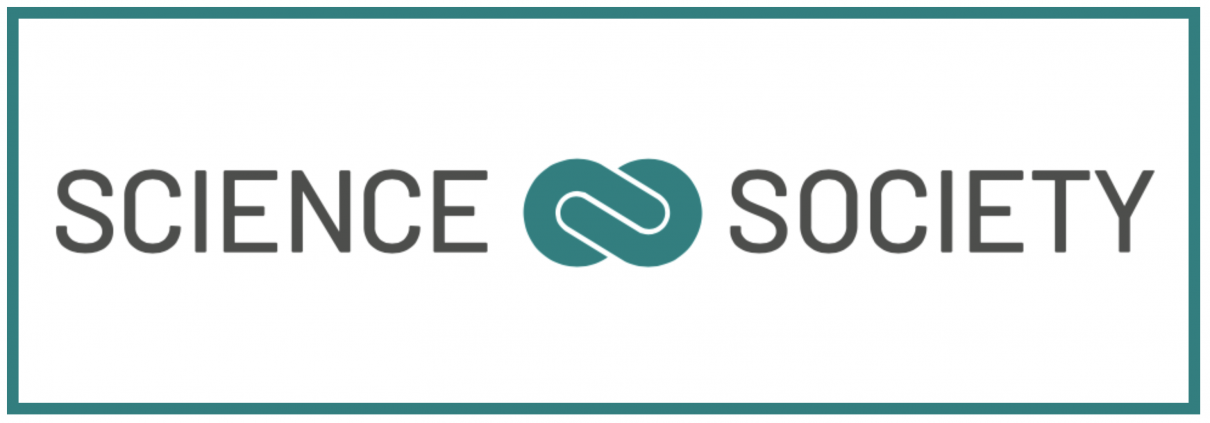Science with Society: The SCISO Project
While some studies report that people tend to have a largely positive outlook on science and scientists in a general sense, public opinion appears increasingly polarised on some specific issues that tend to be more global in nature, ranging from public health to climate change. Misinformation, conspiracy theories, and fake news play a key role in deepening the gap between science and society, and their ability to spread is intensified thanks to the widespread use of social media.
What measures can scientists take to make their work more trustworthy? What tools are available to increase and improve the dialogue between science and society? These are the type of questions that the SCISO Project seeks to answer. Launched by the Global Young Academy’s Working Group Trust in (Young) Scientists, the ‘Science with Society’ or ‘SCISO’ Project aims at improving the relationship between science and society through a series of freely available video tutorials that intend to “enable scientists to reflect about the role of science in society, and to communicate with broader audiences.” The project provides two sets of video tutorials (and quite a bit of bonus material!): Ethics and Scientific Integrity, and Science Communication, for which the GYA partnered with the German National Institute for Science Communication (NaWik).
In this interview, Professor Lisa Herzog, co-lead of the Trust in (Young) Scientists Working Group, explains the vision and mission of the SCISO Project.
“Our first impulse was to ask: ‘What can we do to increase trust in science?’, but this quickly led us to the question: ‘How can science be trustworthy?'”
Question: Why is the SCISO Project necessary in our current social context?
Lisa Herzog: Our starting point was the fact that in certain areas, there’s quite some public distrust in science. Vaccine hesitancy and climate change scepticism are the most prominent examples. In our working group at the Global Young Academy we realised that you find versions of this phenomenon in almost all countries from which our members come. At the same time, being early-career researchers, we were all very much aware that the institutional contexts of science have a logic of their own. That’s of course necessary, up to a point, but it can also make science a kind of “black box” for outsiders.
Our first impulse was to ask: “What can we do to increase trust in science?”, but this quickly led us to the question: “How can science be trustworthy, what does that take?” When we started looking for answers, we realized that there’s a lot of research being done on these topics, for example by sociologists or philosophers of science, but researchers in other fields such as engineering are hardly exposed to it.
SCISO – Introduction to the project
Q.: One of the aims of the SCISO Project is to address the “perceived gap between science and society.” How does this gap manifest itself in practical terms, and why is it so detrimental?
L.H.: Well, take vaccine hesitancy: It can literally cost people their lives! But that’s just the tip of the iceberg. The more general question is this: Is science organised in ways that allow it to make its contributions to society? Oftentimes the answer is yes, but sometimes, due to a lack of communication, this fact does not become clear to the public.
Indeed, sometimes there are vested interest groups that actually work to maintain this gap between science and society. Here we can think of the historical example of the tobacco industry working to obscure the facts that their products were either addictive or potentially detrimental to one’s health. A more current example is when the fossil fuel industry tries to obscure or muddle the messages of climate scientists to create uncertainty around the issue.
Let me add, however, that this is not meant as a call for doing only “applied” research with an immediate payoff. Citizens are also interested in many questions of fundamental research, e.g., in astronomy or history. And of course, the history of science has shown time and again that fundamental research can generate new insights that turn out to be hugely impactful. But that is also something that needs to be explained to a broader public; we cannot simply assume, as scientists, that everyone is as enthusiastic about research as we are!
“..if more young scientists communicate about their work, it also offers a counterweight to the stereotype of scientists as old white men in lab coats.”
Q.: How do you think young scientists in particular can contribute to narrowing the gap between science and society?
L.H.: We think that young scientists are in a very good position for communicating with non-scientists, for a number of reasons. First, being relatively new to science means that you still remember what it was like to not know certain things, and how you had your first moments of insight and understanding – and that can be quite useful for talking to people outside your own field.
Second, many young researchers are familiar with social media and can use these tools to communicate their research. And last but not least, if more young scientists communicate about their work, it also offers a counterweight to the stereotype of scientists as old white men in lab coats; science is in fact much more diverse (even though it could and should become even more diverse) and this should also be visible to society overall.
Q.: The SCISO Project focuses on two sets of tutorials: Ethics and Scientific Integrity, and Science Communication. Why these two?
L.H.: The first set offers tools and arguments for reflecting about the role of science in society, and also about some of the problematic practices within science that we have recently seen and that scientists need to be aware of – without ethical awareness, how can you tell others that they should trust you? The second set is more practical: it’s about concrete strategies for science communication that you can start using immediately. We also have a third set of tutorials in the making that we’re currently finalising: interviews with people who work at the interface of science and society, e.g. in policy advice, and who have agreed to share some of their insights and experiences.
Q.: The SCISO Project kicked off before Covid-19 became a global health crisis, but the ongoing pandemic undoubtedly increased the need to strengthen the links between science and society. Has the pandemic redirected the aims/course of the project in any significant way?
L.H.: It has made even clearer to us how important the topics of the project are!
Of course, during the pandemic the spotlight was very much on the need for science communication and science-policy-advice. But take the topic we cover in tutorial 8, which explores the relation between scientific and other forms of knowledge. This is something that researchers in science-and-technology studies have pointed out for a long time: that scientific knowledge, important as it is, is not the only form of knowledge. There is also experiential knowledge, and indigenous knowledge, and many other forms.
What you saw in the pandemic, at least in the first phase, was a very strong focus on just one type of knowledge: medical knowledge from virologists and epidemiologists. But to make decisions about policy measures, you need different forms of knowledge as well, e.g. about the living conditions of families and how this affects both parents and children forced into home-schooling situations. We hope that by raising awareness about the need for taking multiple perspectives into account, we can also contribute, in the long run, towards better decision-making.
“..sometimes simply saying: ‘That’s a good question, thanks for it. I don’t know the answer now, but I’ll look into it’, is much more important and leads to much better conversations.”
Q.: A topic covered in one of the SCISO tutorials is on improving the relationship between experts and “lay people” and moving away from the so-called “deficit model”, taking into account that we are all lay people in most fields of research. With this in mind, what attitudinal changes are necessary from both experts and lay people to reach more fruitful interactions?
L.H.: What we emphasise in this video is the need for a certain attitude: one that takes seriously that all forms of knowledge are limited, and that, as you say, we’re all lay people in most areas.
I can confirm from my own experience that you don’t have to pretend you know everything; sometimes simply saying: “That’s a good question, thanks for it. I don’t know the answer now, but I’ll look into it,” is much more important and leads to much better conversations with others.
But for many of us, doing outreach work is still something we do as a kind of hobby, in addition to all the other tasks we have. The dialogue with non-scientists needs to be institutionalised, there need to be established formats, which also allow for longer-term collaborations between scientists, citizens, and policy-makers. Of course, these will have to look differently, and include different sets of people, for different fields of knowledge; we can learn from the formats that already exist, e.g. between medical researchers and patient advocacy groups, and see what works for other fields.
SCISO – Interacting with “lay people”
Q.: The Russian invasion of Ukraine earlier this year has highlighted a conflict from a quite different nature to Covid-19 that can equally disrupt the relationship between science and society. How is this relationship specifically affected in times of war, and how does the SCISO Project see the role of science in the face of such conflicts?
L.H.: Well, some of our GYA colleagues had to flee Ukraine under quite dramatic circumstances. What was noteworthy, though, was that the feelings of outrage and dismay about this war by many GYA members in Western countries (and I’m including myself here) were much stronger than about other conflicts in other parts of the world.
It almost seemed as if people realised for the first time that scientists can be victims of war or political suppression – but this is of course not true, this is a much older problem – look at the situations in Yemen or Afghanistan. Science is a global endeavour and flourishes on peaceful, constructive collaboration. Many Ukrainian scientists now see it as their responsibility to try to help their country, e.g., by putting their medical knowledge into the service of medical institutions. As scientists and scholars in other countries, we should try to support them, but we should of course try to do the same for scientists all over the world.
Visit the SCISO Project webpage
About Lisa Herzog

Professor Lisa Herzog, co-lead of the ‘Trust in Young Scientists’ Working Group at the Global Young Academy © Sylvia Germes
Lisa Herzog is an Associate Professor at the Faculty of Philosophy and the Center for Philosophy, Politics and Economics of the University of Groningen, the Netherlands. She studied philosophy, economics, political science and modern history at the universities of Munich (LMU) and Oxford.
Lisa works at the intersection of political philosophy and economics, focusing on the history of political and economic ideas, normative questions around markets, ethics in organizations, and political epistemology. She also writes for a broader public and participates in public debates about the ethics of finance, social justice, and workplace democracy. Since 2019 she has worked at the Faculty of Philosophy and the Center for Philosophy, Politics and Economics of the University of Groningen.
Lisa has been a member of the Global Young Academy since 2017 and she has served as co-lead of the ‘Trust in Young Scientists’ Working Group since 2018.



